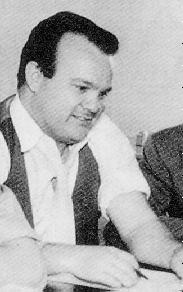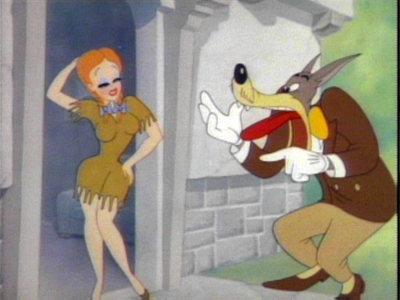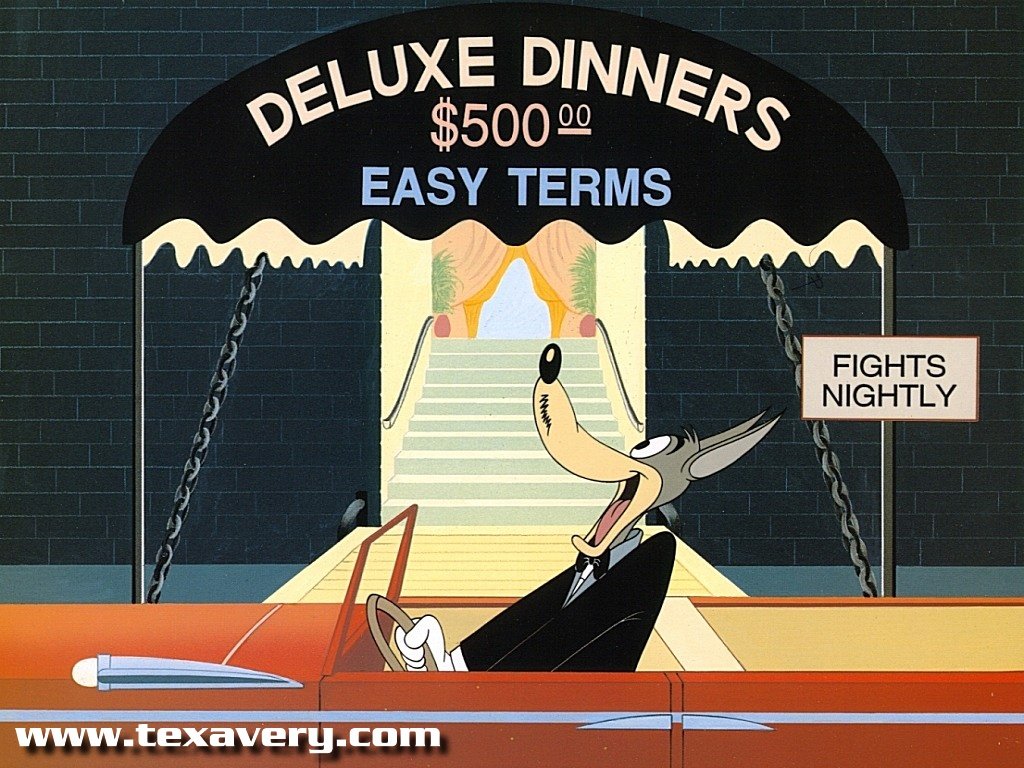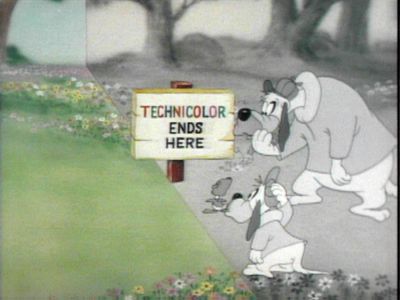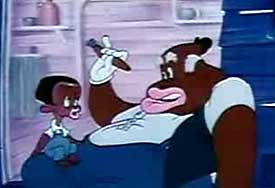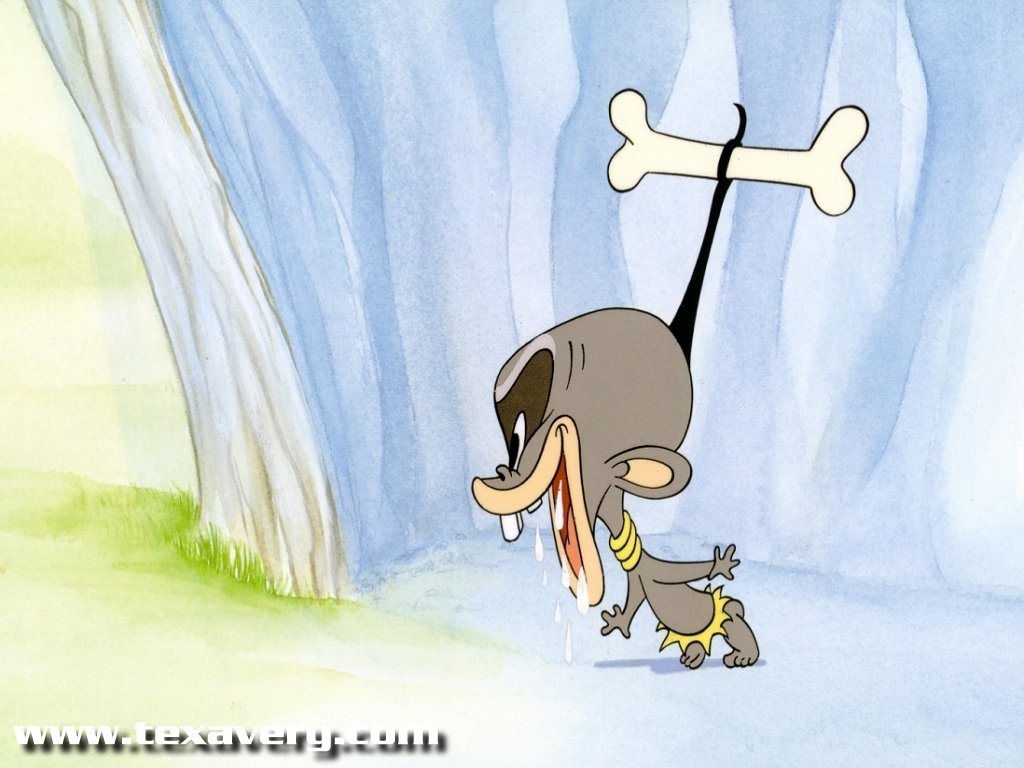TEX AVERY: A UNIQUE LEGACY (1942-1955) by Floriane Place-Verghnes (Eastleigh, UK: John Libbey Publishing), 2006, 214 pp.
I love the last line in Dr. Place-Verghnes’ Acknowledgments -– a tactful understatement which demonstrates both that she wears her academic armor lightly and that she’s temperamentally suited to dealing with someone like Avery: “I reserve a particular sentiment for Warner Brothers Inc., without whom and their point-blank refusal to grant copyright authorisation, this volume would have contained multiple images from Tex Avery and others’ cartoons in support of the textual content.” (Actually, she does cheat a tad by reproducing or at least imitating a classic Avery image on the book’s cover–two giant bulging eyeballs as they appear in one of the Wolf cartoons.)
It’s too bad she didn’t publish this book online–in which case I presume she would have had as little difficulty in illustrating the graphic brilliance of Avery as I’m having here by scavenging diverse items from the Internet. For starters, here are three more characteristic samples:
One of the more interesting challenges in viewing Avery’s vintage MGM work is learning how to process various aspects of their racism and sexism without overlooking their good-humored humanity or drowning in political correctness. Though I’ve only sampled Place-Verghnes’ book so far, she appears to pull off this difficult task. Meanwhile, recently reseeing some of Avery’s more questionable items, such as Uncle Tom’s Cabaña (1947) and Half-Pint Pygmy (1948) =– see below for illustrations of each -– it seems to me that Avery’s stereotypes are far more objectionable when they stem from areas of experience, e.g., Africa, about which he appears to know nothing. Avery’s Africa, for instance, includes palm trees, assorted sea creatures, and a kangaroo, and the title pygmy, far from being the hero (the heroes are clearly George and Junior, who are pursuing him), is basically a generic pickaninny who loves watermelon and a fleeing potential victim like Jerry in Tom and Jerry -– not to mention a conceptual variation on the antagonists in the classic King-Size Canary (1947). By contrast, Uncle Tom is the uncontested hero of his own cartoon, living in what is recognizably an American city with slave quarters, and extremely resourceful and eloquent as well as multifaceted (he plays a mean piano), even if he fibs a lot.
I guess my main point is that Avery, a quintessential and perhaps even stereotypical Texan, can be judged either as that or as a man of his period (which appears to be mainly Place-Verghnes’ approach), or perhaps as both, in conjunction with being an artist at least as talented as his Uncle Tom [7/19/08]


